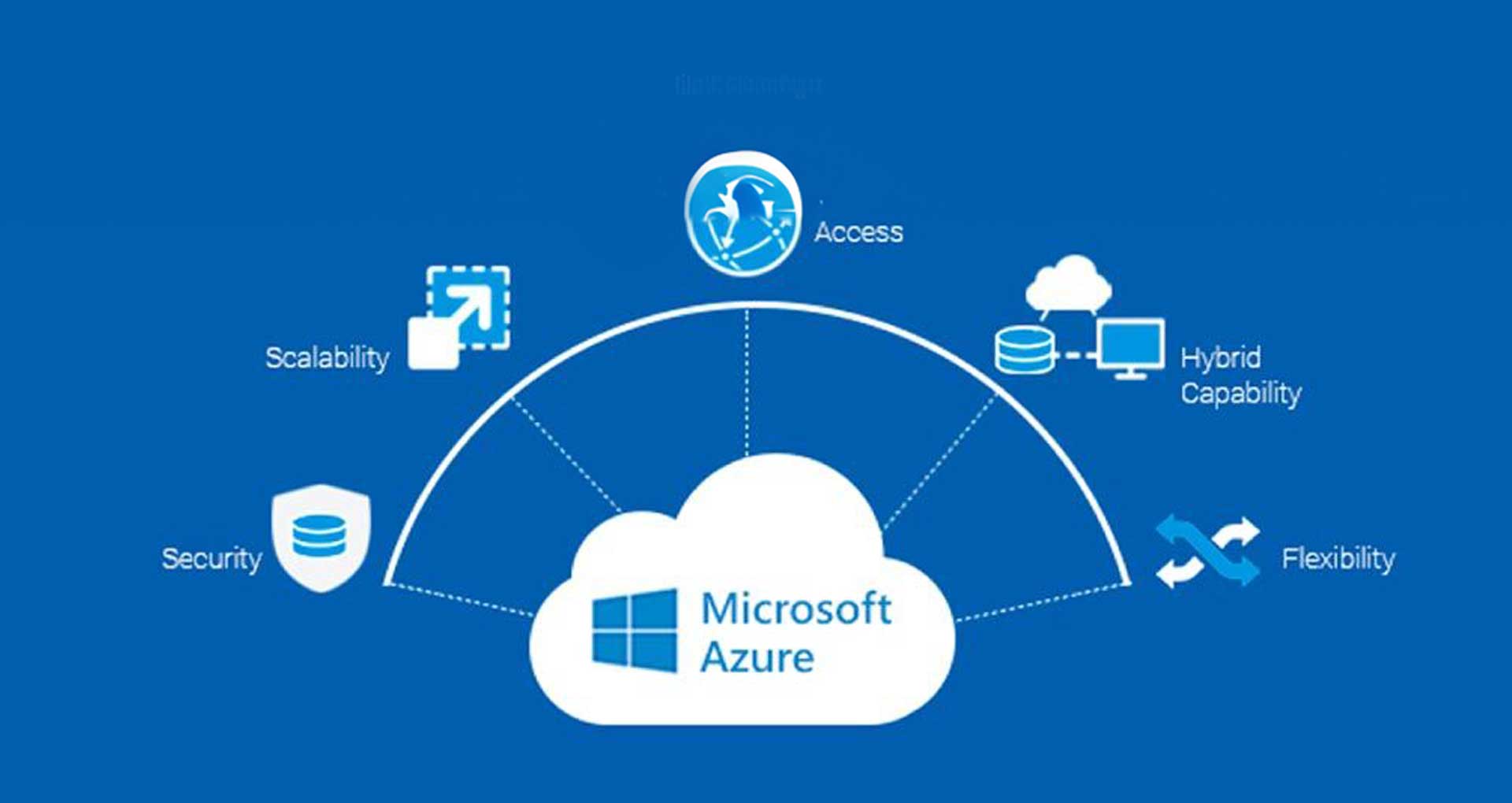Infrastructure as Code (IaC) is fast becoming a strategic imperative for the success of cloud strategy because it helps teams govern cloud infrastructures more efficiently. The surge in cloud-native apps has led organizations to codify their cloud assets (such as Kubernetes clusters, IAM, S3 storage, and more) into infrastructure-as-code using tools like Terraform. In this blog, we will explore the benefits, challenges, and best practices of Infrastructure as Code.
Did You Know?
- In a survey of more than 1000 technology practitioners and decision-makers worldwide, 51%[1] of respondents rate IaC as critical to the success of their cloud strategy.
- In a survey by FireFly, 90%[2] of cloud users surveyed are using IaC, and 68% claim that more than half of their cloud is codified into IaC.
- 75%[3] of respondents agreed that IaC improves efficiency for platform engineers. Similarly, 55% agree that implementing IaC leads to less downtime, while 52% admitted that it makes compliance easier.
What is Infrastructure as Code (IaC)?
Infrastructure as code uses automated coding and manages underlying IT infrastructure as software rather than through physical hardware components. In contrast to the traditional ClickOps, IaC allows you to design, build, deploy, and manage cloud infrastructure in code.
It simplifies the process of configuring resources by defining the end state of what you want to be created. From there, your framework or orchestrator, such as Terraform, Cloud Formation, Azure Resource Manager, or Kubernetes, will provision these resources properly. This method of building cloud infrastructure is more scalable than running a long list of ad hoc CLI commands, as all the configurations are stored centrally and are version-controlled. It gives you speed, consistency, and accountability across environments by enabling faster time to market and boosting developer productivity.
Benefits of Infrastructure as Code
Many benefits are available to businesses that embrace IaC to manage cloud infrastructure. Let’s look at nine major benefits of IaC model in the dynamic cloud landscape.

Cost Optimization
IaC automates the provisioning and scaling of infrastructure, ensuring that resources are only allocated when needed and idle resources are eliminated. This dynamic resource allocation minimizes wastage and reduces infrastructure overheads. Further, IaC automates deployment to allow programmers to focus on higher-value tasks, which increases their productivity and enables organizations to save on salaries and hiring costs. Additionally, IaC’s ability to replicate consistent environments enables organizations to save on manual labor and operational expenses while maintaining high levels of reliability.
Faster Development Cycles and Consistency
IaC helps you automate the provisioning and configuration of your infrastructure, resulting in faster deployment time. By eliminating manual processes, IaC allows you to repeat your deployments consistently. It also allows you to execute multiple deployment tasks in parallel, which further helps increase deployment time.
Low Risk Of Human Errors
Manual development and deployment create countless possibilities for human errors and can often lead to redundant processes. IaC automates the provisioning and configuration of infrastructure to minimize manual interventions and reduce the likelihood of misconfigurations.
Improved Consistency
Improved consistency is one of the key benefits of Infrastructure as Code (IaC). It ensures uniformity and predictability in IT infrastructure by defining configurations through code. This reduces configuration drift, simplifies troubleshooting, and enforces disciplined change control, making IT operations more stable and efficient.
Accountability
Since everything is documented and replaced by simple and fully traceable changes to the source code repository, you can easily track who made the change, when, and for what reason. This eliminates hours of communication that are otherwise usually spent in figuring out who did what and why. Having a reliable version control system like Git that captures every slight change helps companies increase transparency and thus solve conflicts a lot faster.
Consistent Configured Environments
Consistently configured environments ensure consistency and eliminate errors and deviations while ensuring compatibility. Uniform consistency ensures that the engineering and development teams are all on the same page and use the same pre-approved IT infrastructure to initiate deployment without sacrificing quality.
Increases Efficiency In Software Development
IaC boosts efficiency and productivity across teams by using pre-configured IaC components, which help simplify complex cloud deployments and shorten development cycles. These consistent configurations are easily achieved through scripts, enabling multiple teams to work in synchronized environments. This enhanced efficiency helps foster continuous iteration, aids CI/CD, and allows for resource-efficient environment management.
Reduced Management Overheads
IaC boosts efficiency and productivity across teams by using pre-configured IaC components, which help simplify complex cloud deployments and shorten development cycles. These consistent configurations are easily achieved through scripts, enabling multiple teams to work in synchronized environments. This enhanced efficiency helps foster continuous iteration, aids CI/CD, and allows for resource-efficient environment management.
Security and Faster Recovery
IaC boosts security by making it easier to automate best practices, security audits, and compliance checks across all of your environments. It also streamlines disaster recovery planning for swift execution during outages. In-fact, you can also use IaC to automate the process of restoring individual resources, such as servers or databases. Iac thus helps minimize downtime, enhance customer satisfaction, and boost revenue.
While we have explored various infrastructure as code advantages above, such as enhanced efficiency and security, it is not without challenges. Understanding these challenges is crucial to harnessing the full potential of IaC in modern IT operations. Let’s explore some key challenges organizations may encounter when implementing IaC.
Infrastructure As Code Challenges and Their Solutions
While IaC adds a lot of value to the IT environment, there are key infrastructure as code challenges that cannot be overlooked.
Merging New Frameworks/ Adoption Discrepancies
Challenge
One of the major challenges companies face when implementing IaC is merging new frameworks with existing technology. This challenge becomes particularly prominent in both declarative and imperative approaches, where tools like Terraform and AWS CloudFormation are employed to convert complex, interconnected infrastructure components and their dependencies into code. Therefore, adopting IaC requires a substantial investment of time, meticulous planning, and collaboration with various teams, especially those responsible for security and compliance. It may happen that the new framework may not be compatible with existing IaC tools and infrastructure or may introduce new security vulnerabilities or may not be compliant with all applicable regulations. Therefore, planning and implementing the transition to new frameworks is important to minimize disruption.
Solutions
- Start gradually with a small-scale pilot project to uncover and tackle early challenges rather than attempting a full-scale implementation across your infrastructure from the outset.
- Develop and enforce IaC standards and best practices apart from providing comprehensive training and education on IaC for all teams to maintain consistency in IaC usage throughout the organization.
Coding Language Dependency
Challenge
Coding language dependency in adopting IaC presents several challenges. Firstly, it restricts your options for IaC tools and frameworks, by limiting your choices. Secondly, it complicates the recruitment of skilled IaC engineers, especially if you’re using a less common coding language. It also elevates the risk of vendor lock-in if you rely on language-specific IaC solutions.
Solutions
- To overcome these challenges, consider selecting a popular coding language for your IaC projects, which widens your tool and talent pool.
- Alternatively, explore language-agnostic infrastructure as code tools and frameworks that work with any coding language. Finally, investing in team training becomes essential, particularly when dealing with less popular coding languages, to ensure effective IaC utilization.
Configuration Drift
Challenge
Configuration drift results in disparities between the intended and actual infrastructure states, leading to performance issues, security vulnerabilities, and compliance concerns. This occurs due to manual changes made outside the IaC process, human errors within the IaC, application-induced alterations, and security vulnerabilities.
Solutions
- Implement CI/CD Pipeline: Implementing a continuous integration and continuous delivery (CI/CD) pipeline helps address configuration drift. This CI/CD pipeline automates IaC deployment and monitors infrastructure for changes. If any inconsistencies are detected, the pipeline deploys the IaC to restore alignment with the desired state.
- Version Control System: Utilizing version control systems to track IaC changes and employing IaC tools that support drift detection and prevention can help overcome this challenge. It is also a good practice to educate your dev teams about configuration drift and CI/CD processes to meet this challenge.
Versioning and Traceability
Challenge
Versioning and collaborating on IaC can be challenging due to complexities in managing intricate infrastructures, large-scale deployments, visibility across diverse environments, and security concerns. IaC can often become intricate, especially for large and complex infrastructures. This complexity can make versioning and collaborative efforts challenging. Further, IaC deployments often span various cloud providers and on-premises environments. Thus, managing code across these distributed environments can be complex, leading to difficulties in maintaining consistency and collaboration.
Solutions
- Leveraging version control systems like Git, selecting appropriate IaC tools, and establishing a clear versioning and collaboration plan at the outset can help overcome this common challenge.
- Employing IaC modules, templates, and drift detection tools too can enhance IaC management and facilitate collaborative efforts, ultimately ensuring the effective control of infrastructure as code.
Security and Compliance
Challenge
The complexity of IaC, especially in larger infrastructures, makes it challenging to ensure both security and compliance. Additionally, scaling IaC deployments across various cloud providers and on-premises environments can make achieving complete security and compliance visibility difficult. Furthermore, IaC deployments are susceptible to security threats, demanding robust protective measures and regulatory compliance.
Solutions
- Consider implementing security best practices, utilizing IaC tools supporting security and compliance. It is a good practice to regularly scan IaC for vulnerabilities, establish a CI/CD pipeline for automated security and compliance checks, and educate your team on the latest security and compliance standards.
- Employing IaC modules and templates as well as using IaC drift detection tools, can further enhance security and compliance efforts.
Implementing Infrastructure as Code (IaC) comes with its challenges, but these obstacles can be effectively addressed through best practices in IaC. By adhering to these best practices, organizations can streamline their infrastructure management and achieve the benefits of infrastructure as code in DevOps.
Infrastructure as Code Best Practices
The following best practices enable you to optimize the benefits of IaC within your organization.
Maintain Code in Version Control for IaC
Maintaining code in a Version Control System (VCS) like Git or Subversion allows for precise tracking of changes made to the infrastructure code over time, ensuring transparency and accountability. VCS also provides a safety net by allowing teams to revert to previous working versions in case of errors or unexpected issues during updates or deployments. It further helps streamline collaboration as version control systems enable multiple team members to work simultaneously and ensure the smooth integration of their changes. This practice also upholds code consistency, a vital aspect in IaC for error mitigation and system reliability. Furthermore, version control systems enhance security by protecting code from unauthorized access, enabling change monitoring, and facilitating security audits.
Ensure Modularity in IaC
Modularity in Infrastructure as Code (IaC) allows you to break down all infrastructure components into separate modules and later reuse code in different projects, making things more efficient and consistent. Small, manageable modules are easier to update, maintain and also provide greater control over the infrastructure component. As a matter of fact, testing is simpler when code is divided into parts, and scalability is improved by adding or removing modules. Modular IaC also helps enhance security by detecting bugs and making the team more agile.
Testing, Integrating, and Deploying with CI/CD
It offers improved quality and reliability through automated testing, by reducing deployment risks and automating infrastructure changes between development and operations teams. CI/CD pipelines automate various tests, like unit, integration, and end-to-end tests, to catch and address issues early. By automating infrastructure changes, CI/CD reduces the chances of human error and deployment inconsistencies.
Why Embrace the IaC Approach with Rishabh Software?
At Rishabh Software, we offer secure, scalable, cost-effective infrastructure as code services to help you simplify complex IT deployments. We empower your developers to leverage modern, smart DevOps practices and deploy industry-leading tools to remove bottlenecks, enable self-service, and ensure security and compliance in an ever-changing cloud environment.
As certified service partners for AWS (Amazon Web Services) and Microsoft Azure, we help redefine your cloud computing environment as code so you can move away from manual tasks, accelerate delivery speed, and build applications that you need to achieve your business goals.
Our in-depth knowledge and broad experience will help you utilize the best IaC tools to streamline configuration management, automate your entire cloud environment, and minimize platform drift.
Conclusion
Infrastructure as Code (IaC) is a powerful tool that can help organizations of all sizes significantly enhance efficiency, reliability, and security while reducing costs and improving compliance. If you would like to leverage the benefits of IaC to boost your team’s productivity, get in touch with Rishabh Software to help you learn more about it.
Frequently Asked Questions
Q: How Does Infrastructure as Code Work?
A: Infrastructure as Code (IaC) is the practice of managing and provisioning infrastructure using code rather than manual setup. This automation enhances efficiency, reliability, and consistency.
IaC defines the infrastructure’s desired state in code, facilitating provisioning and management through various tools and services. Two common approaches are:
- Imperative IaC: This approach outlines specific steps to reach the desired state, offering flexibility however, it is more complex to write.
- Declarative IaC: In this approach, the desired state is defined without specifying the steps, making it simpler to write but it is potentially less flexible.
The choice between them depends on organizational needs. Imperative IaC suits complex or customized deployments, while declarative IaC is preferred for simpler or standardized setups.
Q: Which Are The Popular Infrastructure As Code Tools?
A: Let’s explore some popular Infrastructure as Code (IaC) tooling:
- Terraform: Terraform, developed by HashiCorp, is a leading IaC tool specializing in managing infrastructure across various platforms, including AWS, Azure, GCP, Oracle Cloud, Alibaba Cloud, Kubernetes, and Heroku. It’s platform-agnostic, allowing for flexible infrastructure provisioning and management across different platforms and providers while ensuring desired configurations.
- Ansible: Ansible is an open-source configuration management tool with IaC capabilities. It supports both cloud and on-premises environments, operating as an agentless tool through SSH or WinRM. Ansible excels in configuration management and infrastructure provisioning but has limitations in managing infrastructure itself.
- Pulumi: Pulumi is a relatively recent IaC tool focusing on a developer-centric experience. Unlike other tools that dictate language or format, Pulumi offers the freedom to use various programming languages such as Python, TypeScript, and JavaScript.
- Chef/Puppet: Chef and Puppet are robust configuration management tools with automation capabilities and some infrastructure management functions throughout the development pipeline. Chef is designed for easy integration into DevOps practices with collaborative tools, while Puppet primarily targets process automation and features automated built-in watchers to detect configuration drift.
- CFEngine: CFEngine is a mature tool exclusively dedicated to configuration management. While it doesn’t handle infrastructure management, it accommodates complex configuration requirements, including security hardening and compliance.
- AWS CloudFormation: AWS CloudFormation is Amazon’s proprietary IaC tool for managing AWS infrastructure. It integrates seamlessly with all AWS services and serves as a first-party solution for configuring various AWS resources.
- Azure Resource Templates: Microsoft Azure employs JSON-based Azure Resource Templates to support IaC practices within the Azure platform. These templates ensure infrastructure consistency and are suitable for configuring different resource types.
Footnotes:
1. https://www.hashicorp.com/state-of-the-cloud/2022
2. https://www.firefly.ai/state-of-iac-report
3. https://www.firefly.ai/state-of-iac-report











 30 Min
30 Min


